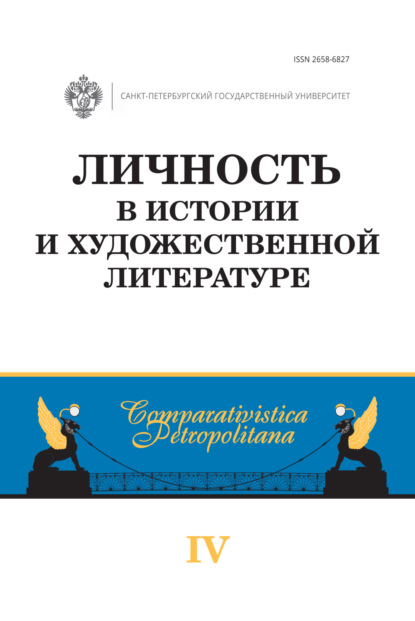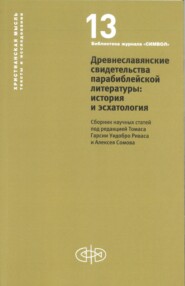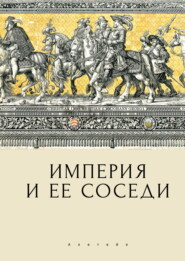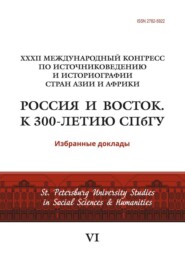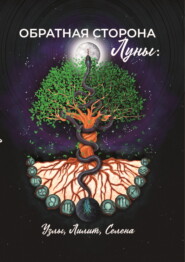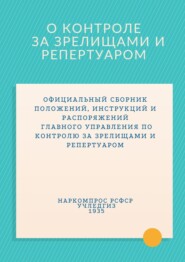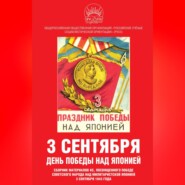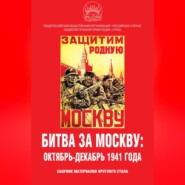По всем вопросам обращайтесь на: info@litportal.ru
(©) 2003-2025.
✖
Личность в истории и художественной литературе
Настройки чтения
Размер шрифта
Высота строк
Поля
4. Миф о красоте Клеопатры. http://www.vostokolyub.info/kollektsiya-interesnostey/galereya-zabluzhdeniy/kleopatra-krasavitsa-zabluzhdenie.htm (дата обращения: 15.10.2020).
5. Монтескье Ш. Опыт о вкусе // Монтескье Ш. Избранные сочинения. М.: Госполитиздат, 1955. С. 735–758.
6. Паскаль Б. Мысли. Малые сочинения. Письма. М.: Астрель, 2011. 529 с.
7. Плутарх. Сравнительные жизнеописания. http://www.ancientrome.ru/ antlitr/plutarch/index-sgo.htm (дата обращения: 15.10.2020).
8. Эпиктет. Беседы. https://www.litmir.me/br/?b=94623 (дата обращения: 15.10.2020).
9. Corneille P. Mеdеe // Corneille P. Tеh ?tre complet: 2 t. T. 1. Paris: Gallimard, Biblioth?que de la Plеiade, 1950. P. 555–615.
10. Corneille P. Pompеe // Corneille P. Tеh ?tre complet: 2 t. T. 1. Paris: Gallimard, Biblioth?que de la Plеiade, 1950. P. 989–1054.
11. Corneille P. Rodogune // Corneille P. Tеh ?tre choisi. Moscou: Radouga, 1984. P. 343–419.
12. Lafuma L. Les trois fragments de Pascal sur Clеop?tre // XVII
si?cle, 1962. Р. 54–57.
13. Larousse de la langue fran?aise. Paris: Larousse, 1979. 2109 p.
14. Mеrе, chevalier de. Discours de l’esprit, de la conversation, des agrеmens, de la justesse Amsterdam: chez P. Mortier, 1687.
15. Mesnard J. Sur le nez de Clеop?tre // La Culture au XVII
si?cle, P.U.F. Paris, 1992. Р. 387–392.
16. Nicole P. Lettres sur l’hеrеsie imaginaire. http://www.penseesdepascal.fr/ Vanite/Vanite32-approfondir.php (дата обращения: 15.10.2020).
17. Tourrette E. de. Commentaire. http://atelierprepa.over-blog.com/article-pascal-laf-46-br-78291377.html (дата обращения: 15.10.2020).
References
1. Vellej Paterkul Gaj. Rome’s History. Voronezh: Izdatel’stvo Voronezhskogo universiteta Publ., 1985. 211 p. http://ancientrome.ru/antlitr/t. htm?a=1425002000 (accessed: 15.10.2020). (In Russian)
2. Kornel’ P. Rodogune. Kornel’ P. Izbrannye tragedii. Moscow: Gosudarstvennoe izdatel’stvo khudozhestvennoi literatury Publ., 1956, pp. 199–264. (In Russian)
3. Lukan Mark Annej. Pharsalia, or On the Civil War. Moscow: Ladomir Publ.; Nauka Publ., 1993. http://ancientrome.ru/antlitr/t.htm?a=1358953001 (accessed: 15.10.2020). (In Russian)
4. Myth about Cleopatra’s beauty. http://www.vostokolyub.info/kollektsiya-interesnostey/galereya-zabluzhdeniy/kleopatra-krasavitsa-zabluzhdenie.htm (accessed: 15.10.2020). (In Russian)
5. Montesk’e Sh. Essay on the taste // Montesk’e Sh. Selected works. Moscow: Gospolitizdat Publ., 1955, pр. 735–758. (In Russian)
6. Paskal’ B. Thoughts. Little works. Letters. Moscow: Astrel’ Publ., 2011, 529 р. (In Russian)
7. Plutarh. Comparative biographies. http://www.ancientrome.ru/antlitr/plutarch/index-sgo.htm (accessed: 15.10.2020). (In Russian)
8. Epiktet. Conversations. https://www.litmir.me/br/?b=94623 (accessed: 15.10.2020). (In Russian)
9. 9. Corneille P. Mеdеe. Corneille P. Tеh ?tre complet: 2 t. T. 1. Paris: Gallimard, Biblioth?que de la Plеiade, 1950, pp. 555–615.
10. Corneille P. Pompеe. Corneille P. Tеh ?tre complet: 2 t. T. 1. Paris: Gallimard, Biblioth?que de la Plеiade, 1950, pp. 989–1054.
11. Corneille P. Rodogune. Corneille P. Tеh ?tre choisi. Moscou: Radouga, 1984, pp. 343–419.
12. Lafuma L. Les trois fragments de Pascal sur Clеop?tre. XVII
si?cle, 1962, pр. 54–57.
13. Larousse de la langue fran?aise. Paris: Larousse, 1979, 2109 p.
14. Mеrе, chevalier de. Discours de l’esprit, de la conversation, des agrеmens, de la justesse. Amsterdam: chez P. Mortier, 1687.
15. Mesnard J. Sur le nez de Clеop?tre. La Culture au XVII
si?cle. P.U.F., Paris, 1992, pp. 387–392.
16. Nicole P. Lettres sur l’hеrеsie imaginaire. http://www.penseesdepascal.fr/ Vanite/Vanite32-approfondir.php (accessed: 15.10.2020).
17. Tourrette E. de. Commentaire. http://atelierprepa.over-blog.com/article-pascal-laf-46-br-78291377.html (accessed: 15.10.2020).
Altashina V. D. Cleopatra and her nose: One Pascal’s thought story
Cleopatra is one of the world literature mythological heroines, and even her nose became a stable metaphor thanks to Pascal. Why was “Cleopatra’s nose” exactly and what did Pascal mean? To understand why Cleopatra attracted the philosopher’s attention, the article examines the perception of Cleopatra’s image in antiquity and in the 17
century, as well as the myth about her beauty. In 17
century Cleopatra ofet n appeared in fictional literature (Corneille, La Calprenede) and in essays (Nicole, Mere) – thus it was not only Pascal who used this personality to illustrate his idea about little causes of great events. Teh article analyzes Pascal’s three thoughts, in which the Egyptian queen’s image appears, to reveal the philosophical meaning of the famous metaphor.
5. Монтескье Ш. Опыт о вкусе // Монтескье Ш. Избранные сочинения. М.: Госполитиздат, 1955. С. 735–758.
6. Паскаль Б. Мысли. Малые сочинения. Письма. М.: Астрель, 2011. 529 с.
7. Плутарх. Сравнительные жизнеописания. http://www.ancientrome.ru/ antlitr/plutarch/index-sgo.htm (дата обращения: 15.10.2020).
8. Эпиктет. Беседы. https://www.litmir.me/br/?b=94623 (дата обращения: 15.10.2020).
9. Corneille P. Mеdеe // Corneille P. Tеh ?tre complet: 2 t. T. 1. Paris: Gallimard, Biblioth?que de la Plеiade, 1950. P. 555–615.
10. Corneille P. Pompеe // Corneille P. Tеh ?tre complet: 2 t. T. 1. Paris: Gallimard, Biblioth?que de la Plеiade, 1950. P. 989–1054.
11. Corneille P. Rodogune // Corneille P. Tеh ?tre choisi. Moscou: Radouga, 1984. P. 343–419.
12. Lafuma L. Les trois fragments de Pascal sur Clеop?tre // XVII
si?cle, 1962. Р. 54–57.
13. Larousse de la langue fran?aise. Paris: Larousse, 1979. 2109 p.
14. Mеrе, chevalier de. Discours de l’esprit, de la conversation, des agrеmens, de la justesse Amsterdam: chez P. Mortier, 1687.
15. Mesnard J. Sur le nez de Clеop?tre // La Culture au XVII
si?cle, P.U.F. Paris, 1992. Р. 387–392.
16. Nicole P. Lettres sur l’hеrеsie imaginaire. http://www.penseesdepascal.fr/ Vanite/Vanite32-approfondir.php (дата обращения: 15.10.2020).
17. Tourrette E. de. Commentaire. http://atelierprepa.over-blog.com/article-pascal-laf-46-br-78291377.html (дата обращения: 15.10.2020).
References
1. Vellej Paterkul Gaj. Rome’s History. Voronezh: Izdatel’stvo Voronezhskogo universiteta Publ., 1985. 211 p. http://ancientrome.ru/antlitr/t. htm?a=1425002000 (accessed: 15.10.2020). (In Russian)
2. Kornel’ P. Rodogune. Kornel’ P. Izbrannye tragedii. Moscow: Gosudarstvennoe izdatel’stvo khudozhestvennoi literatury Publ., 1956, pp. 199–264. (In Russian)
3. Lukan Mark Annej. Pharsalia, or On the Civil War. Moscow: Ladomir Publ.; Nauka Publ., 1993. http://ancientrome.ru/antlitr/t.htm?a=1358953001 (accessed: 15.10.2020). (In Russian)
4. Myth about Cleopatra’s beauty. http://www.vostokolyub.info/kollektsiya-interesnostey/galereya-zabluzhdeniy/kleopatra-krasavitsa-zabluzhdenie.htm (accessed: 15.10.2020). (In Russian)
5. Montesk’e Sh. Essay on the taste // Montesk’e Sh. Selected works. Moscow: Gospolitizdat Publ., 1955, pр. 735–758. (In Russian)
6. Paskal’ B. Thoughts. Little works. Letters. Moscow: Astrel’ Publ., 2011, 529 р. (In Russian)
7. Plutarh. Comparative biographies. http://www.ancientrome.ru/antlitr/plutarch/index-sgo.htm (accessed: 15.10.2020). (In Russian)
8. Epiktet. Conversations. https://www.litmir.me/br/?b=94623 (accessed: 15.10.2020). (In Russian)
9. 9. Corneille P. Mеdеe. Corneille P. Tеh ?tre complet: 2 t. T. 1. Paris: Gallimard, Biblioth?que de la Plеiade, 1950, pp. 555–615.
10. Corneille P. Pompеe. Corneille P. Tеh ?tre complet: 2 t. T. 1. Paris: Gallimard, Biblioth?que de la Plеiade, 1950, pp. 989–1054.
11. Corneille P. Rodogune. Corneille P. Tеh ?tre choisi. Moscou: Radouga, 1984, pp. 343–419.
12. Lafuma L. Les trois fragments de Pascal sur Clеop?tre. XVII
si?cle, 1962, pр. 54–57.
13. Larousse de la langue fran?aise. Paris: Larousse, 1979, 2109 p.
14. Mеrе, chevalier de. Discours de l’esprit, de la conversation, des agrеmens, de la justesse. Amsterdam: chez P. Mortier, 1687.
15. Mesnard J. Sur le nez de Clеop?tre. La Culture au XVII
si?cle. P.U.F., Paris, 1992, pp. 387–392.
16. Nicole P. Lettres sur l’hеrеsie imaginaire. http://www.penseesdepascal.fr/ Vanite/Vanite32-approfondir.php (accessed: 15.10.2020).
17. Tourrette E. de. Commentaire. http://atelierprepa.over-blog.com/article-pascal-laf-46-br-78291377.html (accessed: 15.10.2020).
Altashina V. D. Cleopatra and her nose: One Pascal’s thought story
Cleopatra is one of the world literature mythological heroines, and even her nose became a stable metaphor thanks to Pascal. Why was “Cleopatra’s nose” exactly and what did Pascal mean? To understand why Cleopatra attracted the philosopher’s attention, the article examines the perception of Cleopatra’s image in antiquity and in the 17
century, as well as the myth about her beauty. In 17
century Cleopatra ofet n appeared in fictional literature (Corneille, La Calprenede) and in essays (Nicole, Mere) – thus it was not only Pascal who used this personality to illustrate his idea about little causes of great events. Teh article analyzes Pascal’s three thoughts, in which the Egyptian queen’s image appears, to reveal the philosophical meaning of the famous metaphor.





